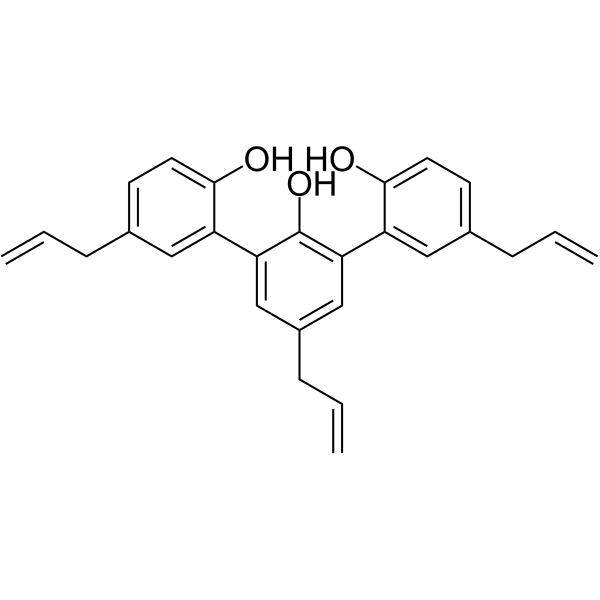
Dunnianol
CAS No. 139726-29-7
Dunnianol( —— )
Catalog No. M29135 CAS No. 139726-29-7
Dunnianol shows anti-inflammatory activity and moderate antibacterial activity.
Purity : >98% (HPLC)
 COA
COA
 Datasheet
Datasheet
 HNMR
HNMR
 HPLC
HPLC
 MSDS
MSDS
 Handing Instructions
Handing Instructions
| Size | Price / USD | Stock | Quantity |
| 100MG | Get Quote | Get Quote |


|
| 200MG | Get Quote | Get Quote |


|
| 500MG | Get Quote | Get Quote |


|
| 1G | Get Quote | Get Quote |


|
Biological Information
-
Product NameDunnianol
-
NoteResearch use only, not for human use.
-
Brief DescriptionDunnianol shows anti-inflammatory activity and moderate antibacterial activity.
-
DescriptionDunnianol shows anti-inflammatory activity and moderate antibacterial activity.(In Vitro):Dunnianol increases NAG-1(multiple targets related to inflammation) activity and decreases cellular oxidative stress. Dunnianol inhibits Staphylococcus aureus and methicillin-resistant Staphylococcus aureus.
-
In Vitro——
-
In Vivo——
-
Synonyms——
-
PathwayImmunology/Inflammation
-
TargetNOS
-
RecptorNOS
-
Research Area——
-
Indication——
Chemical Information
-
CAS Number139726-29-7
-
Formula Weight398.49
-
Molecular FormulaC27H26O3
-
Purity>98% (HPLC)
-
Solubility——
-
SMILESOc1ccc(CC=C)cc1-c1cc(CC=C)cc(c1O)-c1cc(CC=C)ccc1O
-
Chemical Name——
Shipping & Storage Information
-
Storage(-20℃)
-
ShippingWith Ice Pack
-
Stability≥ 2 years
Reference



-
Neotuberostemonine
Neotuberostemonine (NTS) is one of the main antitussive alkaloids in the root of Stemona tuberosa Lour it has a significant protective effect on bleomycin (BLM)-induced pulmonary fibrosis through suppressing the recruitment and M2 polarization of macrophages. Neotuberostemonine demonstrates antitussive properties in guinea pigs.
-
Cnidicin
Cnidicin has anti-allergic and anti-inflammatory activity, it inhibits the degranulation of mast cell and the NO generation in RAW 264.7 cells(IC50 value, 7.5 microM).
-
Epimagnolin B
Epimagnolin B has anti-inflammatory activity, it can inhibit the production of NO and PGE(2) and the expression of respective enzyme iNOS and COX-2 through the suppression of I-kappaB-alpha degradation and nuclear translocation of p65 subunit of NF-kappaB.



 Cart
Cart
 sales@molnova.com
sales@molnova.com


